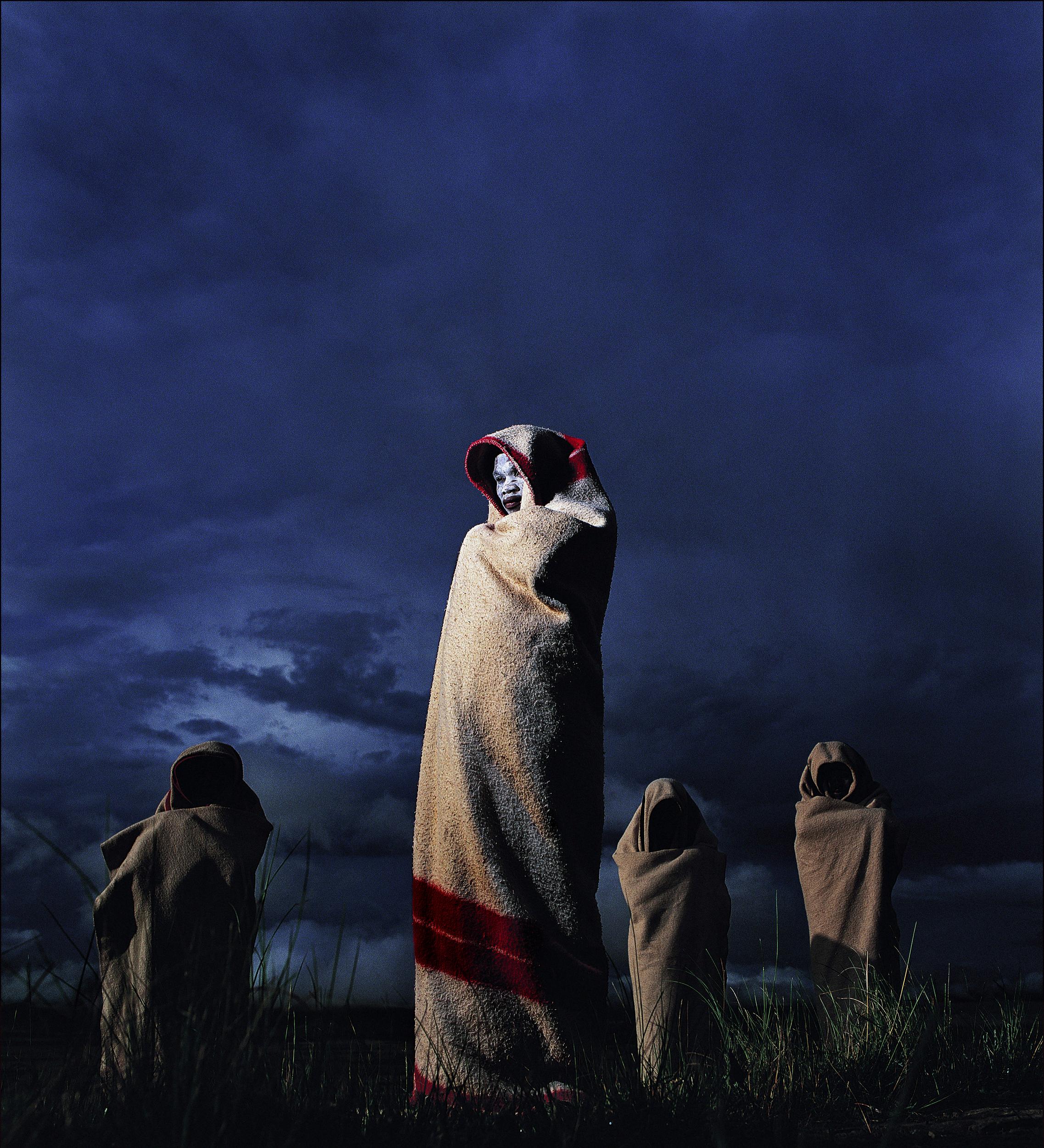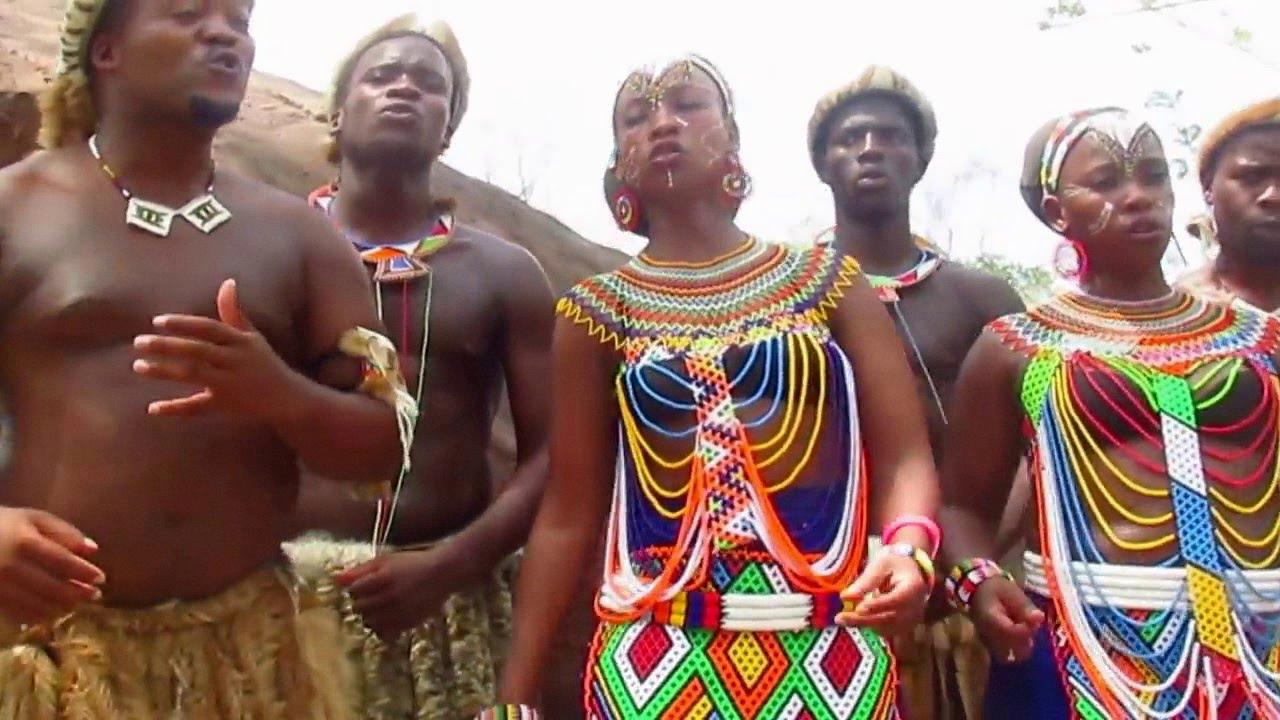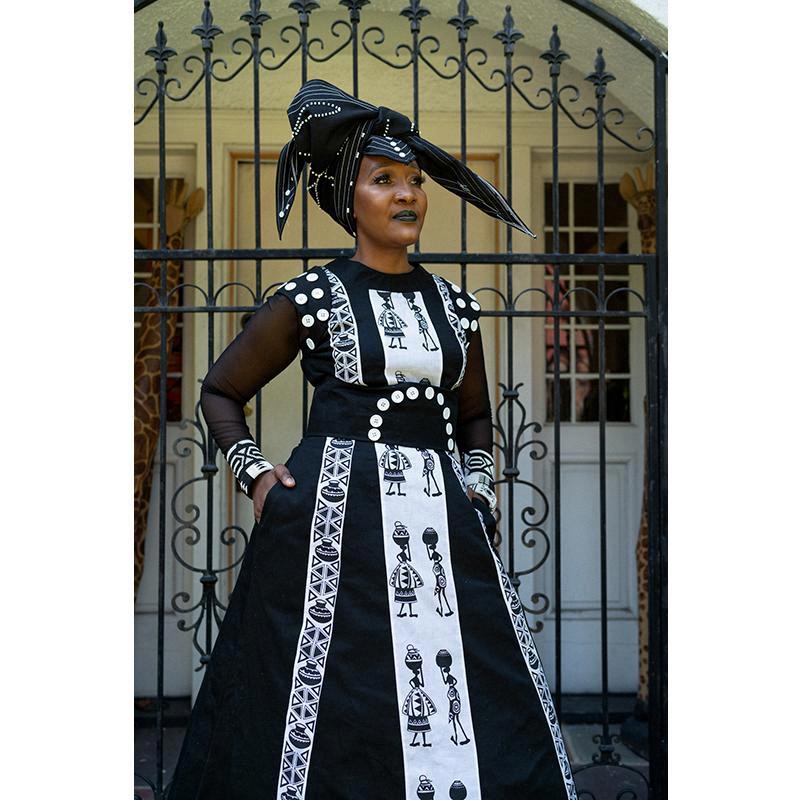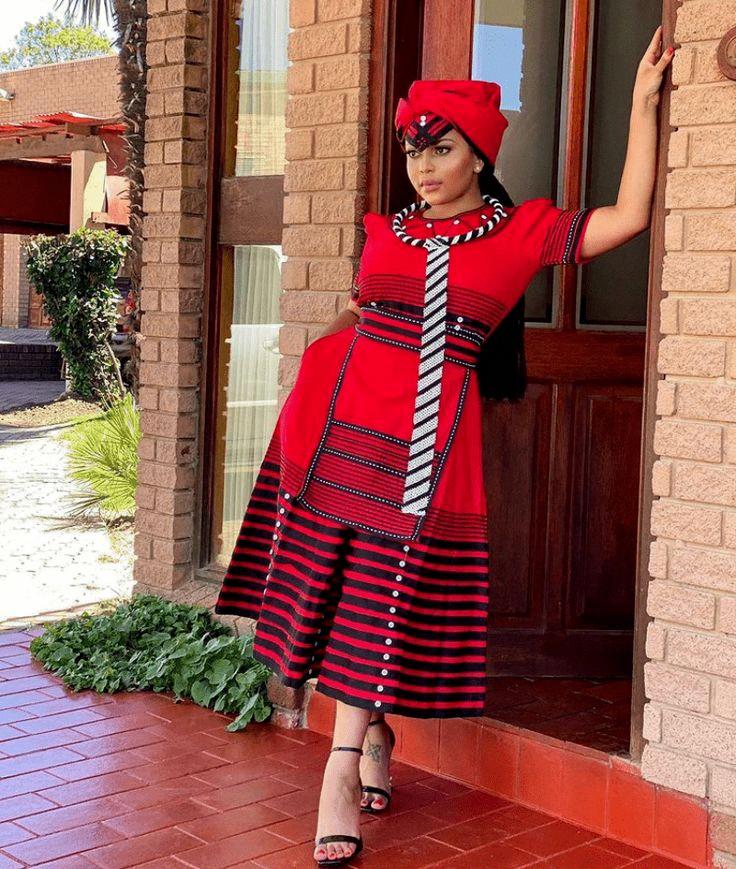Xhosa women are an integral part of the Xhosa culture and play important roles in their families and communities. In this blog post, we will dive into the lives and experiences of Xhosa women, their traditions, and their contributions to society.
Historically, Xhosa women were primarily responsible for the home and family, including cooking, cleaning, and caring for children. However, this role has evolved over time, and Xhosa women are now highly educated and successful in various fields, including politics, business, and the arts.
One of the most significant events in a Xhosa girl’s life is the intonjane – a rite of passage into womanhood. This ritual takes place after a girl has had her first period and marks her sexual maturity and ability to conceive. During the intonjane, the girl undergoes a series of rituals, including being taught about her responsibilities as a woman, learning traditional songs and dances, and being presented to the community as a young woman.
Xhosa women are known for their beautiful and intricate beadwork, wich they use to create stunning jewelry, clothing, and other accessories. This art form has been passed down through generations and is an essential part of Xhosa culture.
In Xhosa tradition, the ancestors act as intermediaries between the living and God, and Xhosa women play an essential role in honoring and communicating with the ancestors. They are also responsible for passing down cultural traditions and values to future generations.
Xhosa women have made significant contributions to society, both historically and in modern times. For example, Charlotte Maxeke, a Xhosa woman, was the first black woman to earn a university degree in South Africa and went on to become a leader in the women’s suffrage movement. In modern times, Xhosa women like Dr. Nkosazana Dlamini-Zuma have played critical roles in politics and leadership.
Xhosa women are an essential part of Xhosa culture and have played significant roles in their families, communities, and society. Their traditions, art, and cultural practices have been passed down through generations and continue to be celebrated and honored today.
The Xhosa People: A Cultural Overview
The Xhosa people are well-known for their traditional way of life, which involves hunting and herding. They are a Bantu ethnic group and the second largest cultural group in South Africa after the Zulu. The Xhosa are particularly known for their strong sense of community and their deep-rooted traditions, which have been passed down through generations. They have a rich cultural history, including their famous initiation ceremony, whre young men undergo a rite of passage to become men. The Xhosa are also known for their language, isiXhosa, which is one of the eleven official languages of South Africa. Today, many Xhosa people live in urban areas and have adapted to modern life, but they still hold on to their cultural heritage and maintain their traditional practices.
Source: brentstirton.com
Unique Characteristics of Xhosa People
The Xhosa people have a rich cultural heritage that is unique to their ethnic group. One of the most distinctive features of Xhosa culture is their language, which is spoken by millions of people in South Africa and Zimbabwe. The Xhosa are also known for their traditional clothing, which includes brightly colored blankets and beaded jewelry.
Another unique aspect of Xhosa culture is their belief in ancestors and the important role they play in daily life. The ancestors act as intermediaries between the living and God, and are honored in rituals to bring good fortune. Dreams are also considered important in divination and contact with ancestors.
In addition, the Xhosa are known for their initiation rituals, which are an important part of their cultural identity. Boys undergo a circumcision ritual, while girls participate in an initiation ceremony that involves learning abut their roles and responsibilities as women.
The Xhosa people have a unique cultural identity that is characterized by their language, traditional clothing, belief in ancestors, and initiation rituals.
Initiation of Xhosa Women
The initiation of Xhosa women, also known as Intonjane, is a traditional rite of passage practiced in the Eastern Cape of South Africa. This initiation ritual takes place after a girl has had her first period, and it is symbolic of her sexual maturity and ability to conceive. During the initiation, the girl is taken away from her family and community to a secluded location where she is taught about her culture and the responsibilities of womanhood. She is also taught about the importance of respecting her body and the bodies of others. The initiation process involves a series of rituals and ceremonies, including the shaving of the head, the wearing of traditional clothing, and the learning of traditional dances and songs. The initiation culminates in a ceremony where the girl is presented to her community as a young woman. The initiation of Xhosa women is an important cultural practice that has been passed down thrugh generations and is still widely practiced today.
Showing Respect in Xhosa Culture
Xhosa people have a rich culture of showing respect to others. One of the primary ways they show respect is through their greetings. Greetings are seen as a sign of respect, and Xhosa people take them seriously. They use diffrent types of greetings depending on the time of day and the person they are greeting. For example, in the morning, people greet each other by saying “Molo” (hello) or “Mhoro” (good morning). In the afternoon, they use “Mhle” (good afternoon), and in the evening “Sobonana” (goodbye).
Another way Xhosa people show respect is through their body language. They believe that body language is just as important as what you say, and so they pay close attention to their posture, eye contact, and facial expressions. When speaking to an elder, for example, they will lower their eyes as a sign of respect. They also avoid interrupting when elders are speaking and wait patiently for their turn to speak.
Xhosa people also show respect by using honorifics. These are special titles that are used to show respect for someone’s position or status. For example, a teacher may be called “Mama” or “Baba,” which means mother or father, respectively. A chief may be called “Nkosi,” which means king. Using honorifics shows that the person is respected and valued.
Xhosa people show respect through their greetings, body language, and use of honorifics. They believe that showing respect is crucial in building relationships and maintaining harmony in their communities.
The Significance of Xhosa Circumcision
Xhosa circumcision is deeply rooted in their cultural traditions and is considered an essential rite of passage for young boys into manhood. There are many reasons why Xhosas practice circumcision, including personal growth and development, family and peer pressure, gaining independence and knowledge, a connection with ancestors, and initiation into manhood.
For Xhosas, circumcision is seen as a way of preparing young boys for the responsibilities and challenges of adulthood. It is believed that through this process, young men learn valuable life lessons that will help them becme leaders and role models in their communities. Additionally, circumcision is seen as a way of connecting with their ancestors and honouring their cultural heritage.
Family and peer pressure also play a significant role in Xhosa circumcision. Parents and elders encourage their children to undergo circumcision as a way of demonstrating their commitment to the community and their willingness to uphold cultural traditions. Peers also play an important role in this process, as young boys often undergo circumcision together, forming close bonds that can last a lifetime.
Circumcision is viewed as a way of gaining independence and knowledge. During the circumcision process, young boys are separated from their families and are required to live in isolation for a period of time. This isolation is seen as an opportunity for young boys to reflect on their lives and gain a deeper understanding of their place in the world.
Xhosa circumcision is a complex and deeply ingrained cultural practice that serves many purposes. It is seen as a way of preparing young boys for adulthood, honouring cultural traditions, demonstrating commitment to the community, and gaining independence and knowledge.
Source: omniglot.com
The Most Beautiful Tribe in South Africa
It is important to note that beauty is subjective and varies from person to person. However, the Zulu tribe is one of the most well-known tribes in South Africa, and its people are often regarded as some of the most aesthetically pleasing. Zulu women are particularly renowned for their striking appearance, often characterized by intricate beadwork, colorful baskets, and other small sculptures. These adornments are typically handcrafted using traditional techniques passed down through generations, making them unique and culturally significant. Additionally, the Zulu people are known for their rich cultural heritage and vibrant traditions, which only adds to their allure. While it is impossible to definitively say which tribe is the most beautiful in South Africa, the Zulu tribe certainly stands out as one of the most visually captivating.
The Racial Identity of Xhosa People
Xhosa is not a race, but rther a group of mostly related peoples who live primarily in the Eastern Cape province of South Africa. They are part of the southern Nguni and speak mutually intelligible dialects of Xhosa, a Bantu language of the Niger-Congo family. The Xhosa people are of Bantu origin and are one of the largest cultural groups in South Africa, with an estimated population of over 8 million people. It is important to note that race is a social construct and not a biological fact, and the Xhosa people, like all human beings, belong to the same species, Homo sapiens.
The Significance of Xhosa Marriage
Xhosa marriage is important for several reasons. Firstly, it is considered a sacred union between two individuals who are joined together by God. This means that the couple is blessed by God and their union is recognized by the community as a legitimate and honorable commitment.
Furthermore, Xhosa marriage is important because it signifies the continuation of the family lineage. When a woman gets married, she joins her husband’s family and becomes a part of their lineage. This is important because it ensures the continuation of the family name and traditions.
Xhosa marriage is also important because it is a way of creating social bonds and strengthening community ties. When a couple gets married, the entire community comes together to celebrate and support them. This creates a sense of unity and solidarity within the community, whih is important for social cohesion and stability.
Xhosa marriage is important because it provides a framework for raising children and passing on cultural values and traditions. The couple is expected to raise their children in accordance with Xhosa culture, which includes teaching them the language, customs, and beliefs of their ancestors. This ensures that the culture is passed down from generation to generation and that it continues to thrive and evolve.
Number of Wives a Xhosa Man Can Have
According to the lobola tradition or the Customary Law of Marriage in South Africa, a Xhosa man is permitted to marry up to four wives. This tradition, which involves the payment of a bride price or lobola to the bride’s family, is still practiced in many parts of South Africa, particularly in rural areas and among traditional communities. It is important to note, however, that while the lobola tradition allows for multiple wives, many Xhosa men today choose to have only one wife due to social and economic factors.
Source: luangisa.com
The Practice of Polygamy in Xhosa Culture
Polygamy is allowed in Xhosa culture. In fact, it has been a longstanding tradition in the culture. In Xhosa culture, men are allowed to have multiple wives, a practice known as isithembu. However, it is important to note that polygamy is not a requirement and not all Xhosa men choose to have multiple wives. Additionally, there are certain cultural and legal requirements that must be met befre a man can take on a new wife, such as obtaining the consent of his current wives and being able to financially support all of his wives and children. polygamy is a complex and nuanced aspect of Xhosa culture that is deeply rooted in tradition and continues to be practiced by some members of the community.
Traditional Clothing of Xhosa Wives
Xhosa wives traditionally wear white dresses that are adorned with black bias binding around the hem and neck area. These dresses are often made from a lightweight fabric and are loose-fitting to allow for ease of movement. Additionally, Xhosa wives wear a headdress that is made up of two or three different materials in various colors. The colors of the headdress are significant as they represent the different areas from which the women come from. the dress and headdress worn by Xhosa wives are an important part of their cultural identity and signify their marital status within the community.
Xhosa Initiation Rituals
The Xhosa male initiation is a traditional rite of passage that involves several stages. The first stage is the pre-initiation preparation, durng which the initiates undergo a series of rituals and teachings to prepare them for the circumcision operation. This stage usually takes place in the weeks leading up to the initiation ceremony.
The circumcision operation is the most significant stage of the initiation ritual. It typically takes place in a secluded area away from the community, and experienced traditional surgeons perform the procedure using traditional tools. After the circumcision, the initiates are expected to remain in seclusion for a period of several weeks, during which they are taught the cultural practices and values of the Xhosa people.
During the seclusion period, the initiates are also taught about their responsibilities as men and members of their community. They receive guidance on how to behave, how to treat women, how to care for their families, and how to uphold the traditions and values of their culture.
Once the seclusion period is over, the initiates are reintegrated into society through a ceremony that marks their transition from boys to men. This ceremony is usually attended by family members and members of the community, and is a celebration of the initiates’ new status as men.
Xhosa male initiation is a complex and culturally significant rite of passage that involves several stages, including pre-initiation preparation, circumcision, seclusion, and reintegration. Through this process, Xhosa boys are transformed into men and taught the values and traditions of their culture.
Traditional Xhosa Cuisine
The Xhosa people, also known as AmaXhosa, have a cuisine that consists of a variety of meats, both red and white, which includes game and domestic animals like goats. Vegetables, grains, and samp are also an important part of their diet. One of the staple foods of the Xhosa people is mieliepap, which is made from maize meal. This dish is commonly eaten with vegetables and a meat stew. the Xhosa cuisine is rich in flavor and diversity, incorporating a range of ingredients that reflect the culture and traditions of this vibrant community.
Source: pinterest.com
The Significance of Babies in Xhosa Culture
In Xhosa culture, the birth of a child is an extremely important event. This is because children are believed to ensure the continuity of a clan, which is of great significance in Xhosa society. The ability of a woman to bear children is highly valued, as it is considered fundamental to the survival and growth of the clan. Without children, there would be no initiation school, which is one of the most important ceremonies in Xhosa culture. The initiation school is where young boys are taught the values, customs, and traditions of their culture, and it is a crucial step in their journey to becoming men. In addition to this, babies are also seen as a blessing and a source of joy and happiness for families. They are celebrated and welcomed into the community with great enthusiasm, and their arrival is oftn marked by traditional rituals and ceremonies. the baby holds a significant place in Xhosa culture, and their birth is considered to be a momentous occasion that is celebrated by the entire community.
Conclusion
Xhosa women play an important role in the culture and traditions of the Xhosa people in South Africa. They are involved in various rituals and ceremonies, such as the intonjane rite of passage into womanhood. Xhosa women are respected for teir ability to bear children and continue the lineage of their families. They also contribute to the economy through their work as farmers and traders. Respect and honor for elders and ancestors are deeply ingrained in Xhosa culture, and women play a key role in maintaining these values. Despite facing challenges such as unequal access to education and employment opportunities, Xhosa women continue to be strong and resilient members of their communities.




